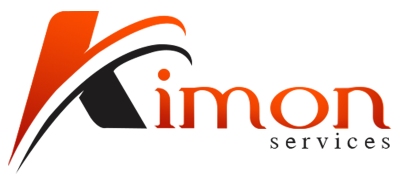Estimated reading time: 8 minutes
Key Takeaways
- Upselling encourages customers to invest in higher-priced product versions, boosting revenue and value.
- Cross-selling focuses on suggesting related or complementary products to elevate the customer experience.
- Combining these strategies can lead to a notable increase in customer lifetime value and retention.
- Customising offers and recommending premium products often inspires trust and loyalty.
- Smart product bundling enhances perceived value and drives higher average order value (AOV).
Table of Contents
Introduction
Are you aiming to enhance your sales and elevate your business? Implementing effective upselling and cross-selling strategies could be the breakthrough you need. These powerful techniques not only increase your revenue but also improve customer satisfaction and loyalty. In this comprehensive guide, we’ll explore the intricacies of upselling and cross-selling, providing you with actionable insights to drive your sales growth.
Understanding Upselling & Cross-Selling
Upselling and cross-selling strategies are essential tools in any astute business owner’s toolkit:
- Upselling: Encouraging customers to purchase a higher-priced version of a product they’re already considering.
- Cross-selling: Suggesting related products to complement or enhance the customer’s original purchase.
By mastering these strategies, you can significantly increase your revenue and HubSpot reports that it can improve customer lifetime value substantially. In this post, we’ll delve deeper into both core concepts and examine how to implement them successfully.
Product Bundling for Enhanced Sales
Product bundling is a powerful cross-selling tactic that involves combining complementary items into a single package, offering convenience and added value. Successful bundling often includes pairing frequently bought-together items or grouping products under a unifying theme (e.g., holiday bundles). By doing so, you can boost the perceived value of your offerings and inspire customers to purchase more in one go.
Maximising Customer Lifetime Value
Customer lifetime value (CLV) measures the total worth of a customer to your business over time. Upselling and cross-selling can elevate CLV by not only increasing short-term sales but also by cultivating repeat business. Personalised recommendations, loyalty programs, and exclusive upgrades are just a few strategies to keep customers coming back and spending more with each visit. Research shows that effective upselling can boost CLV by an impressive 20% to 40%.
Offering Complementary Products and Personalised Recommendations
Suggesting add-ons or complementary products is one of the most direct approaches to cross-selling. The art lies in relevance—providing items that genuinely enhance the customer’s main purchase. Studies have shown that personalised recommendations can increase conversion rates by up to 150%. By implementing data-driven suggestions and robust recommendation engines, you can make your cross-sell offers both valuable and timely.
Increasing Average Order Value (AOV)
A strategic combination of upselling and cross-selling naturally drives higher average order value. You might offer tiered pricing, showcase premium quality, or create exclusive discount bundles. By clearly emphasising the added benefits or cost savings, you help customers see the bigger picture and encourage them to invest more. Observing buying patterns and continuously refining these tactics will yield substantial improvements over time.
E-Commerce Strategies
E-commerce platforms offer rich opportunities for automating and scaling upselling and cross-selling. Simple yet effective tactics include placing related products on product pages, adding pop-up offers at checkout, and sending follow-up emails with relevant add-ons. Incorporating real-time data, such as cart value or recently viewed items, ensures offers are highly targeted and relevant. The goal is always to enhance the customer’s journey, not disrupt it.
Driving Sales Growth with Proven Methods
Real-world examples confirm the potency of upselling and cross-selling. Amazon attributes around 35% of its revenue to its recommendation engine, while HubSpot has reported that 30% of its revenue originates from upselling and cross-selling efforts. Such powerful case studies underscore the universal value of these sales techniques for businesses of any size or location.
Personalised Offers and Customer Segmentation
Tailored offers are the future of modern sales strategies. Segmenting your audience based on demographics, purchase history, or browsing behavior allows you to craft precision marketing. Whether customers are budget-conscious or willing to pay for premium perks, personalisation makes them feel valued and understood. This not only boosts immediate conversion rates but also fosters loyalty and repeat purchases.
Creating a Seamless Buying Experience
A smooth, intuitive buying process naturally supports effective upselling and cross-selling. Streamlined checkout, clear product information, and thoughtfully placed upgrade suggestions guide customers to higher-value items without feeling pressured. Ensuring each step is logical and beneficial to the shopper fosters trust, encouraging them to accept your offers and potentially explore future promotions.
Premium Product Suggestions
Highlighting premium products works best when you genuinely demonstrate added value. Use subtle design cues or a concise comparison chart to showcase the benefits of upgrading (e.g., extended warranties, premium materials, advanced features). A sense of urgency—like limited-time offers—can also nudge hesitant buyers toward the higher-priced option without resorting to gimmicks or pushy tactics.
Leveraging User-Generated Content
User-generated content (UGC)—such as reviews, ratings, and testimonials—serves as social proof that can amplify your upselling and cross-selling efforts. A well-placed customer review highlighting the exact benefits of an upgrade reassures prospects who might otherwise be on the fence. Encouraging UGC often leads to a more authentic brand image, boosting both conversion rates and overall customer trust.
Conversion Optimisation Techniques
Every upsell or cross-sell opportunity should be tested, refined, and re-tested. A/B testing various offers, layouts, and calls to action helps you identify what resonates most with your audience. Use analytics to adjust strategies based on user behavior and continually iterate for sustained growth. Conversion optimisation is an ongoing process—small tweaks can compound into big gains over time.
Conclusion
Mastering upselling and cross-selling can create significant growth for your business. By focusing on product bundling, offering personalised recommendations, suggesting premium products, and optimising every touchpoint in the customer journey, you offer a truly valuable shopping experience. The result is not just more revenue, but also higher customer lifetime value and enduring loyalty. When each upsell or cross-sell feels like a win for both parties, you know you’ve hit the sweet spot for steady, long-term success.
Ready to take action? Begin by identifying your most popular products, brainstorming complementary or upgraded items, and setting up simple offers to nudge existing customers toward greater value.
FAQs
What is the difference between upselling and cross-selling?
Upselling encourages customers to upgrade or purchase a more advanced version of a product. Cross-selling focuses on suggesting complementary items, boosting the overall value of the order without necessarily increasing the cost of the main product.
How do I avoid overwhelming customers with upsells?
Provide clear benefits and integrate your offers naturally into the buying process. Ensure each recommendation solves a real need rather than confuses the shopper with irrelevant choices.
Why is personalisation so important?
Customers respond more positively to offers tailored to their preferences. Personalisation fosters trust, boosts conversion rates, and encourages repeat purchases because buyers feel understood and valued.
Does product bundling always mean a discount?
Not necessarily. Sometimes, bundling is simply about convenience. A small discount can help sweeten the deal, but the perceived value (all items in one package) may be enough to encourage customers to buy more.
How can data analytics improve my upselling strategy?
Data analytics reveals buying patterns and customer preferences, helping you tailor offers with pinpoint accuracy. Tracking metrics like average order value, conversion rates, and cart abandonment helps you refine each upsell and cross-sell strategy.
When is the right time to offer a cross-sell?
Timing is everything. Offering cross-sells at checkout or right after a purchase can work well, especially if the suggested items are truly relevant. However, avoid bombarding customers with too many options.
What is the role of user-generated content in upselling?
Reviews, testimonials, and social proof can greatly influence a buyer’s decision to upgrade or purchase additional items. Hearing how others benefited from a premium option or accessory validates the higher cost.
Should I offer refunds on upsold or cross-sold products?
Yes. Flexible return policies on upsells and cross-sells can reduce customer hesitation and build trust. Make it clear that satisfaction remains your top priority, even for upgraded purchases.
Do upselling and cross-selling work equally well in B2B?
Absolutely. Many B2B transactions involve configurable solutions, where suggesting a more advanced component or related service can be highly beneficial. Tailored offers can also strengthen long-term business relationships.






